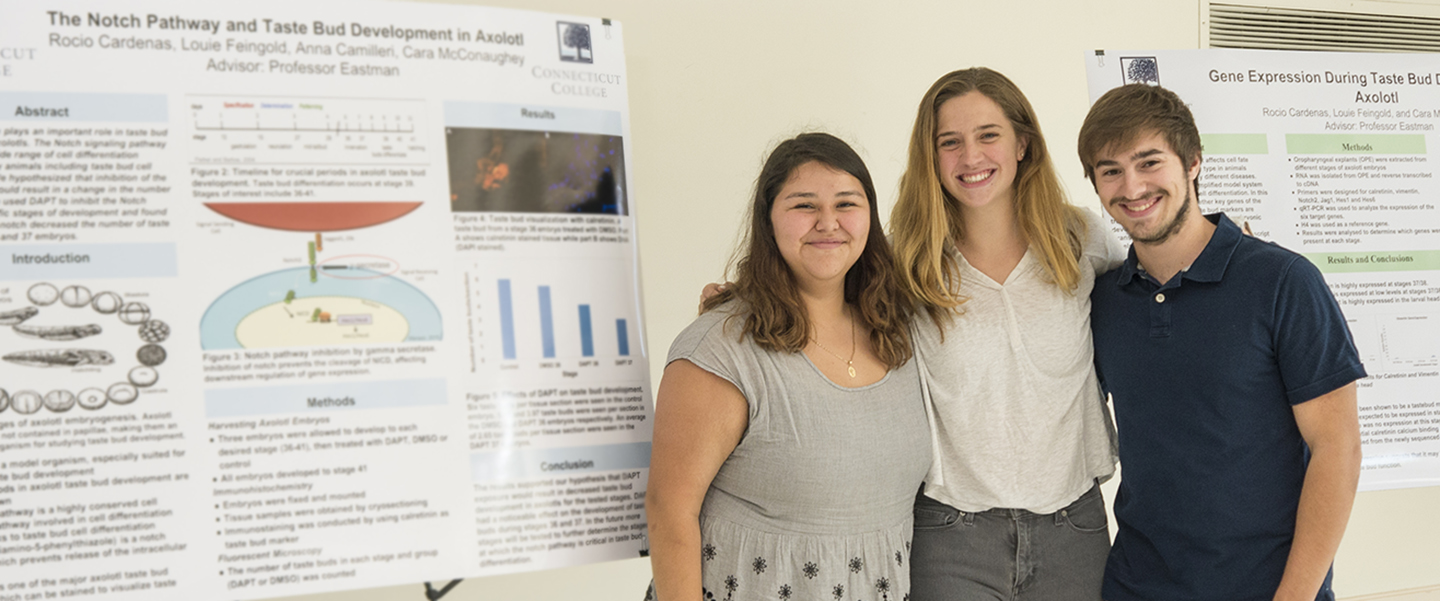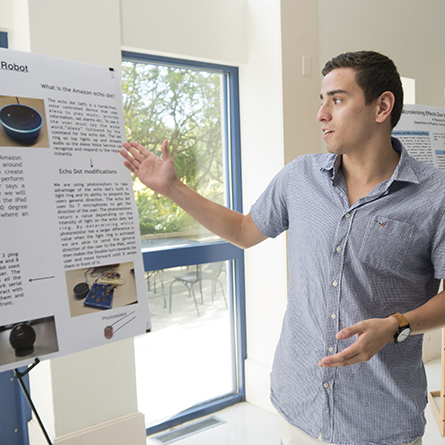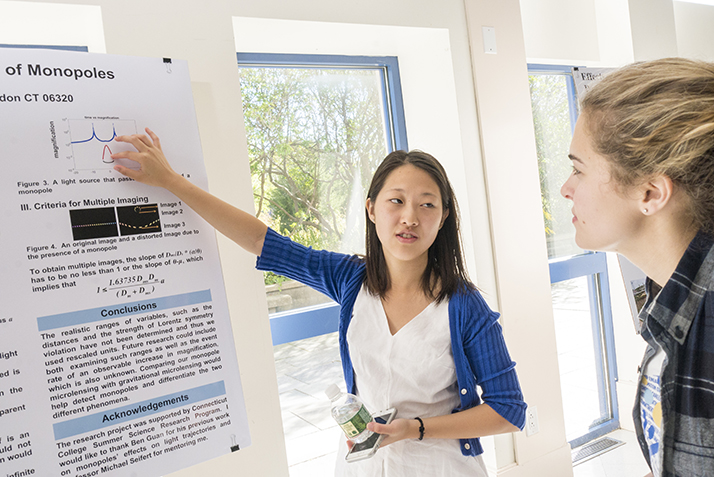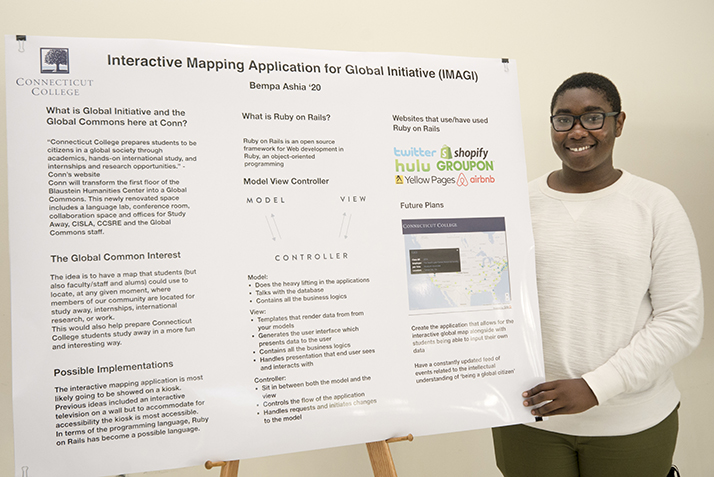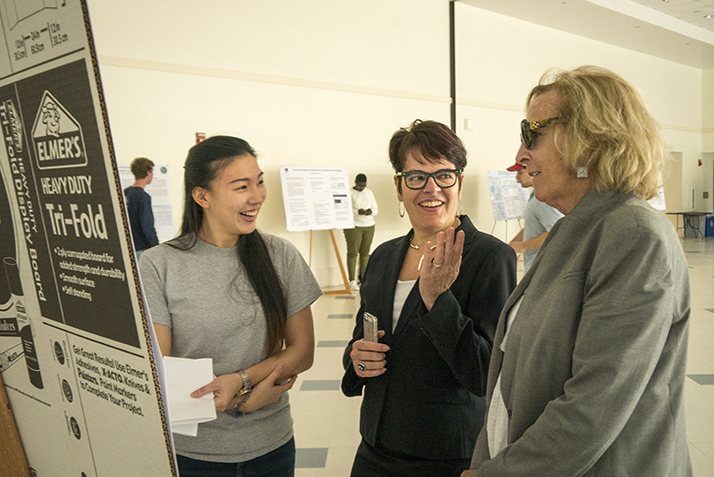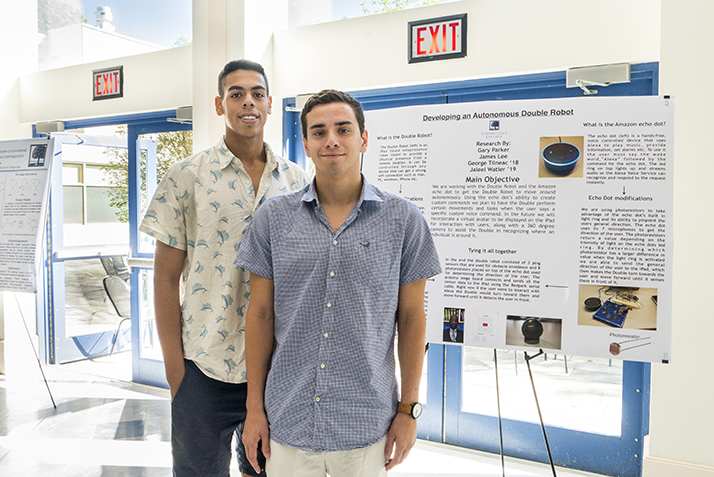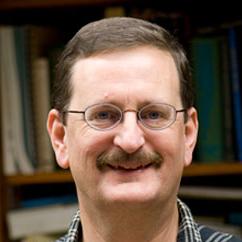
Symposium showcases student research
What can the development of taste buds in the embryos of an obscure Mexican salamander teach us about cancer, Alzheimer’s disease and CADASIL syndrome, a hereditary stroke disorder?
Rocio Cardenas ’19, Anna Camilleri ’18, Louie Feingold ’19 and Cara McConaughey ’19 spent the summer working with Milne Associate Professor of Biology Deborah Eastman to find out.
“There isn’t much scientific research done on taste buds—they aren’t a vital part of the body, after all,” said McConaughey, a cellular and molecular biology major and psychology minor.
But the development of these sensory organs can provide a glimpse into the workings of the cell signaling systems that play a central role in cell development.
“One such system, the Notch pathway, is a way for cells to communicate with one another,” said Eastman. “It’s important in the development and differentiation of embryonic and adult cells, and it’s associated with several cancers and other diseases.”
Eastman and her students ran a series of experiments to explore when the Notch pathway plays a prominent role in the development of taste buds in the embryos of axolotls, a species of Mexican salamander. The students looked at the development of taste buds at various embryonic stages, and also designed their own experiments to look at gene expression. While the studies are ongoing, the students did observe fewer taste buds in embryos in which the Notch pathway was inhibited.
Cardenas, Camilleri, Feingold and McConaughey are four of the 37 Connecticut College students who participated in a symposium Friday to showcase the research they conducted with faculty this summer.
Albert Webson ’18, a political science major and computer science minor, was one of nine students presenting computer science research at the symposium. Webson worked with Computer Science Professor Gary Parker to use deep learning, a form of machine learning that uses computer systems modeled on the human brain and nervous system, to analyze political text from the Wall Street Journal and the Washington Post.
“This type of technology is still very experimental,” Webson said. “Words are just numbers to the computer, and yet by looking at the results, we can get a sense of how people feel about certain political topics.”
Other students conducted research in chemistry, biochemistry, environmental science, behavioral neuroscience, physics and bioinformatics. Franni Brown ’20, Maggie Hardcastle ’19, Mayrelys M. Liz Jimenez ’19, Julie Mordasiewicz ’19 and Emily White ’18 spent the summer in Associate Professor of Psychology Ruth Grahn’s lab working on an ongoing project to understand how male and female rats differ in their strategies for coping with stress. Rachel Glasser ’19, Sercan Durmus ’19 and Emily Caron ’19 worked with Associate Professor of Chemistry Tanya Schneider to understand how pathogenic bacteria use chemical signals to communicate and how disrupting this communication process might be used as a strategy to target bacterial infections.
Students are also doing work in emerging fields. As part of a new quantitative life science consortium on campus, Camilleri worked with Eastman and Visiting Associate Professor of Computer Science Stephen Winters-Hilt on bioinformatics research. She used computational methods to identify microRNA binding motifs in axolotl, and is continuing research this semester to determine which genes are important and expressed during different stages of development using a variety of differential expression annotation programs.
“Ideally, some of these genes may be regulated by the microRNAs that were identified,” she said.
For McConaughey, an aspiring reproductive endocrinologist, the immersive summer experience was as rewarding as it was challenging.
“There is a lot of failure in lab work, but it kept me motivated all summer,” she said.
In addition to contributing to a growing field of study, Eastman said summer research helps students learn lab skills like microdissection and immunostaining and get a sense of what being a researcher is really like: a rollercoaster of excitement and frustration.
“A lot of science is, ‘Oh, that didn’t work,’ but we learn from it,” she said. “And once you get success, you want to continue to find answers to the next question.”
